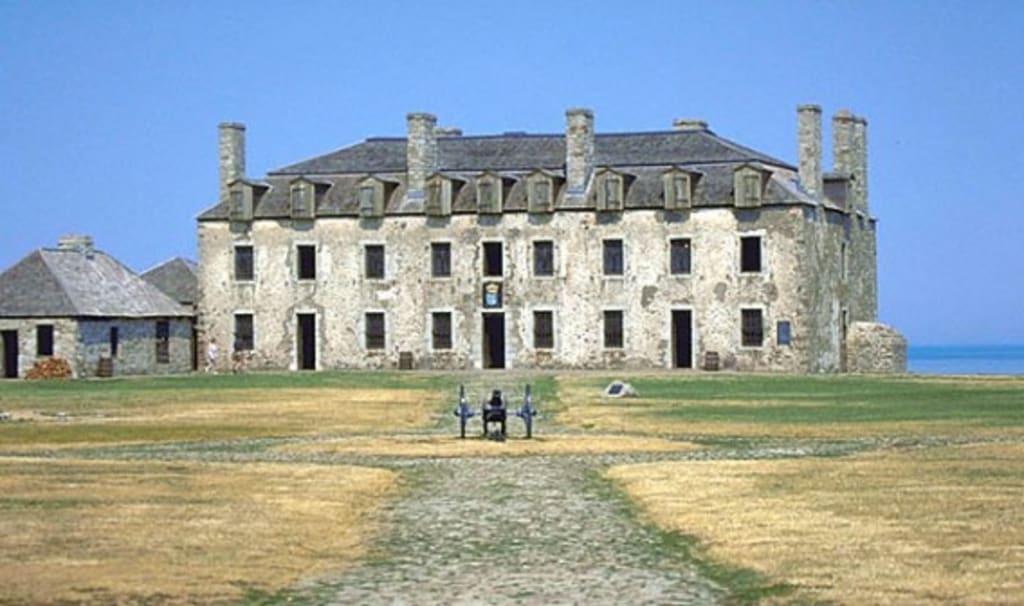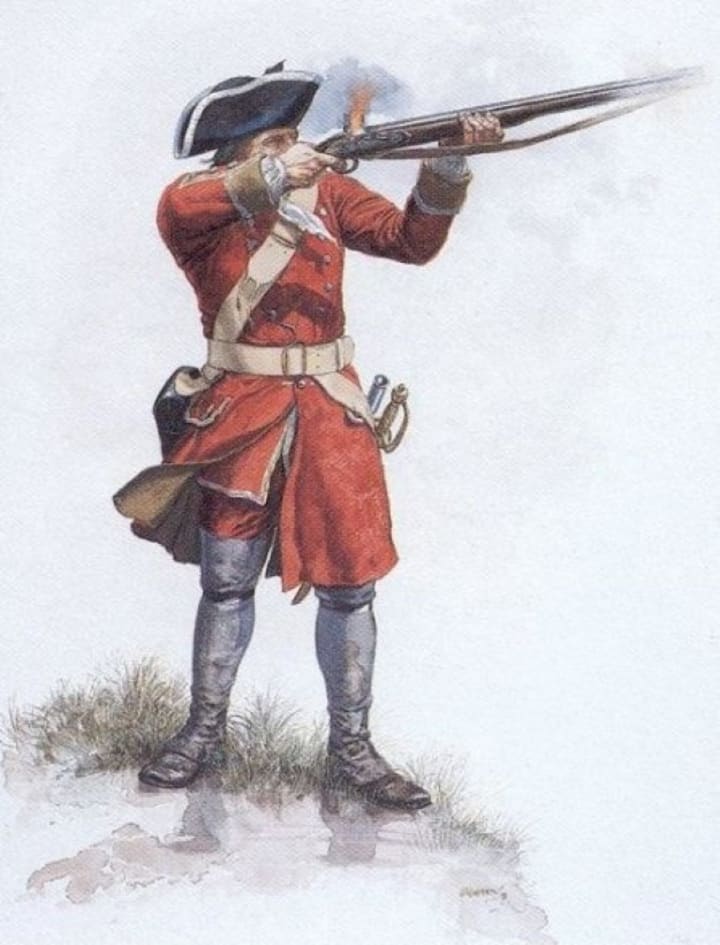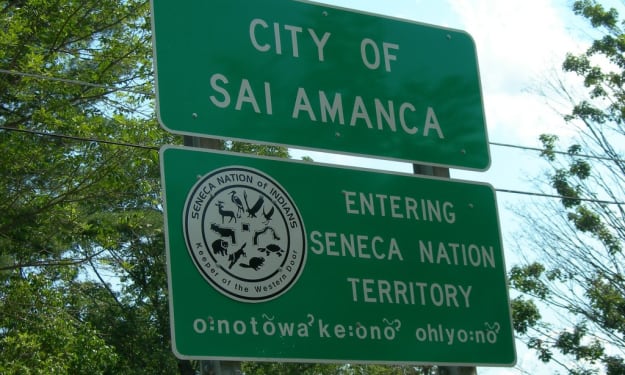Old Fort Niagara, NY
The Historical Fort and the French Castle

TheOld Fort Niagara State Park is a beautiful lake-front picnic spot and tourist destination. This historical site is located in Youngstown, New York, at the mouth of the Niagara River on the shore of Lake Ontario. Many visitors to Niagara Falls, NY (USA) enjoy the free Discover Niagara Shuttle service to and from the many local historical attractions, including Old Fort Niagara! Throughout the year, the Fort has full-dress special event re-enactments that bring us all up close and personal to the struggles faced by past Fort inhabitants.
Old Fort Niagara has festivities in October, for Halloween, which is my favorite time of the year! It perfectly fits the mystique early settlers to the region left behind by this historical site! The Haunted Fortress event is a nighttime fundraiser that you'll need advance reservations and payment to attend. You'll want Old Fort Niagara's e-newsletter to keep updated about ALL events held there anyway. Just sign-up to know what dates The Haunted Fortress will be held on in October this year! The event features a bonfire, guided cemetery tour, and actual stories of ghost sightings about unexplained paranormal experiences at Old Fort Niagara.
The Fort's beachfront is a sloping grass hill down to the water. You can keep your feet cool in the water, walk along the beach and do some rock-hunting, feed the seagulls or take family photos. There are a TON of parking spaces for its various activities throughout the summer months, but parking does cost a fee! I usually wait for the park to close if all I want to do is park, go for a walk or cook on the grill. There are playgrounds and plenty of picnic areas with sheltered pavilions. A nature cabin, with plenty of hands-on activities, is accessible only during park hours. Old Fort Niagara also has a large in-ground, unheated pool, a kiddie pool, and another, even more separate pool with a gigantic slide. Sprinklers shoot water from the ground near the kiddie pool, for those less inclined to get their heads submerged. The swim area also has secluded dressing rooms, with showers and bathrooms. Visitors will find trails to walk, which wind around the park. Trails through the Fort Niagara cemetery, surrounded by fence, have some pretty interesting headstones! There are even boat docks, which are a constant along the banks of the Niagara River. All this is just OUTSIDE the walls of Old Fort Niagara!
History of Fort Niagara
There is no simple history of Old Fort Niagara. The Fort that exists today is not the first fort built on that site. Sometime in the late 1600’s, the tensions between French soldiers and Iroquois Indians improved. Explorer and trader, Rene-Robert Cavelier, Sieur de LaSalle, was able to secure permission from the Iroquois to use the Niagara River as a portage. LaSalle built a ship named ‘Le Griffon’ in 1679 and launched off to explore the Mississippi. That ship somehow got destroyed and there were conflicting stories about how it happened. Expeditions through strange waters usually result in a lost ship or two and mutiny of the crew here or there. A few years later, LaSalle finally made it down the Mississippi to the Gulf of Mexico. He managed to build French military and trading forts along the way. This not only established France in America, but he also established trust with the local Native American tribes on his expeditions. 'La Louisiane,' our present-day Louisiana, named after King Louis XIV, was such a fort. LaSalle established Old Fort Niagara's first small post and named it Fort Conti, or Fort Conde, in 1679. After LaSalle departed from the fort that year on 'Le Griffon', it accidentally burned to the ground and the site was abandoned. It represented the first challenge to the Iroquois barrier.
From the French League to the Six Nations
Before 1722, the five Iroquois nations consisted of the Mohawk, Oneida, Onondaga, Cayuga, and Seneca tribes. Iroquois influence was all over the Lake Ontario waterfront. It stretched from present-day Canada, down the Allegheny Mountains into Virginia, Kentucky, and across the Ohio Valley. The French referred to them as the French League. The Iroquois Confederacy formed in the 12th to 15th centuries and was ‘The Great League of Peace’ and occupied the areas right up to the St. Lawrence River, west of the Hudson River and south into northwestern Pennsylvania. After 1722, the Tuscarora tribe joined, making it the Six Nations. These military expeditions in 1687, to remove the Iroquois threat to the French, was led by the Governor of New France, Jacques-Rene de Brisay, Marquis de Denonville.
Fort Denonville

French Soldier ca.1759
Denonville attacked the Seneca, located at the westernmost of the Iroquois Nation, whose villages lay along the Genesee River. His force moved west, towards the Niagara River. Fort Denonville was established in late July 1687. All they could do was get a stockade fence built around the perimeter in hopes to hold off the angered Seneca outside the fort. The governor withdrew to Montreal, leaving Fort Denonville with Captain Pierre de Troyes, and a garrison of one hundred men. The intention to control the Seneca with attacks had failed. Establishing Fort Denonville had become a trap. Seneca warriors, disease, and eventually starvation had killed most of the men. The fort became increasingly isolated with the deaths of the garrison beginning to add up. Only 12 of de Troyes 100 men remained alive a year later. Burial plots discovered at Old Fort Niagara in 1929 were possibly some of de Troyes men. After a new garrison was posted, the fort was again abandoned in the fall of 1688. The Iroquois barrier to the Great Lakes, thanks to the Seneca Nation, continued. It would be a few decades before the French would make an attempt to secure power and control of Iroquois land yet again.
Fort Niagara

British Redcoat ca. 1745
With Britain and France clashing in attempts to secure continuing access to the Niagara River and surrounding areas, two of the most important wars in the European Wars were known as King William’s War (1689-97) and Queen Anne’s War (1702-13). About thirty years after Fort Denonville failed, a French agent and trader, Louis-Thomas Chabert de Joncaire, secured permission to build another post. In 1725, Joncaire met with the Iroquois council at Onondaga to build a post, as long as it was not intended for a masonry fort. Despite the Seneca’s protests at the delegation, Joncaire walked away with consent from the Iroquois council to build a trading post. Gaspard-Joseph Chausse gros de Lery, Chief Engineer for New France, designed the ‘French Castle’. After the completed construction of the French Castle in 1727, the fort really was briefly used as a trading post.
It was NOT supposed to be used for a masonry fort. Yet, the stone house designed was impregnable to native attack. The top floor has cannons facing outwards and also included garrison’s facilities. Surrounded by a wooden stockade fence, common in North American trading posts, the center feature is a ‘machicolated house’. There you will find soldiers quarters, a store room, a well, a chapel, offices and a dining room for formal guests and private quarters for higher ranking officials. These are all still there today and I have visited it many times. I can almost see these French men sitting around, bragging (and I LOVE the French!!) with de Lery saying in a heavy foreign accent, “I designed a ‘ma-CHI-colated house!’ These Iroquois, they don’t even KNOW!’ and laughing!
The Seneca were angry and the British stated the French violated a treaty from 1713. The British attempted a fort in Oswego but failed due to the French stronghold in the ports of Lake Ontario. The French built a second fort, in 1751, up the Niagara River. Fort Little Niagara was built above Niagara Falls. The French were trying to prevent western Indians from slipping past Fort Niagara to trade with the British in Oswego. It was in 1759, that the now Six Nations of Iroquois (the Tuscarora tribe joined the Nations by then) decided to support the British in a siege at Fort Niagara.
The Siege of Fort Niagara
In 1759, British troops of 2,400 soldiers and 1,000 Iroquois warriors, led by Brigadier John Prideaux, began an attack on Fort Niagara July 1. They landed just east of the fort to avoid French naval vessels and surrounded the garrison with just 600 men on July 6. For nineteen days the attackers were stalled outside Fort Niagara in trenches they dug around the walls. A relief of 1,500 men was coming from the Ohio Valley to aid the French. They were met just south of the fort by the British in the battle known of as LaBelle Famille. On July 25th, the French surrendered Fort Niagara. The British took over and the fort became a meeting place for them with the displaced Iroquois.
The Seneca Nation gifted lands north-east of Niagara Falls to the Tuscarora Nation in 1797. The Holland Land Company also donated land and a ‘Trust Treaty’ is held by the Federal Government. The whole area surrounding Fort Niagara is a rich history that makes it a must-see for anyone visiting the area! Throughout its history until after World War II, when it became surplus and temporarily housed veterans, Old Fort Niagara had been used for American Military purposes. It was officially retired in 1963.
Old Fort Niagara also has a live webcam! Check it out with this link!
Did you like what you read? If you did, why not leave me a tip? If not, you can check out my profile to see what else you like!
About the Creator
Lady Sunday
I'm a self-publishing author of fiction and I love to research and write creative non-fiction.






Comments
There are no comments for this story
Be the first to respond and start the conversation.